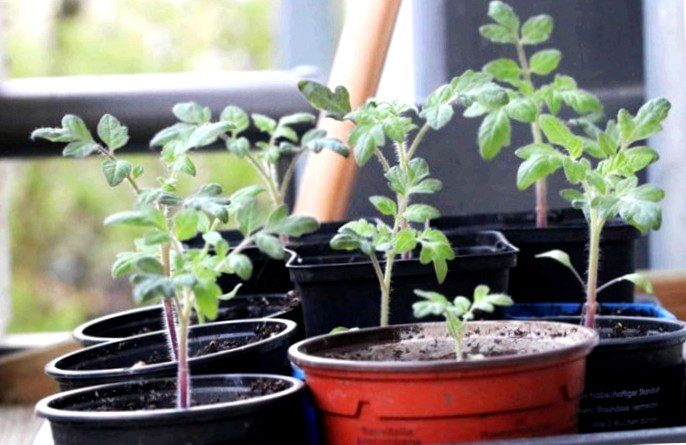
Those who do not have a garden do not have to do without fresh tomatoes from home cultivation. Growing tomatoes indoors can easily be done on a windowsill at home. How to care for them from sowing to harvesting tomatoes is explained in detail below.
Growing tomatoes in the apartment – Suitable tomato varieties
While tomato plants can usually develop unrestrictedly in the open field, there is often much less room for free development when tomatoes are grown indoors. It is important to take this into account when buying and choose a suitable tomato variety accordingly.
Bush tomatoes, such as cherry and cocktail tomatoes, take up little space, which is why they are most suitable for growing tomatoes on the windowsill. In addition, the smaller the tomato varieties, the less maintenance is usually required. Among the most popular bush cherry tomatoes:
- Washington Cherry
- Gold Nugget
- Hybrid tomato Cherries Jubilee
- Terenzo hybrid tomato.
Climbing tomato varieties take up more space than bush tomatoes and are less suitable for the windowsill unless there is a larger pot with room for a climbing aid.
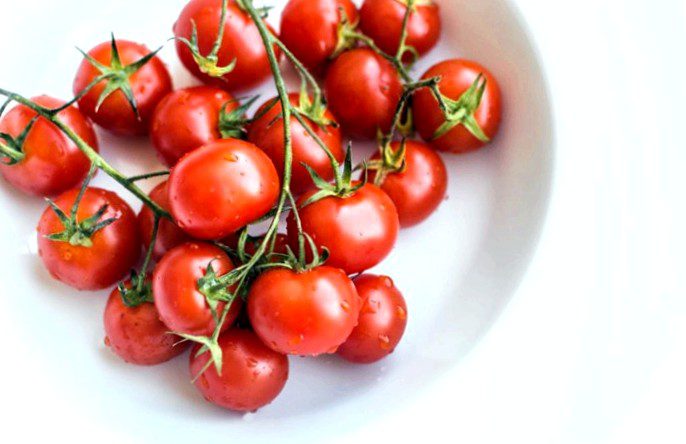
Tip: A robust specimen can be found, for example, in the wild tomato.
Not insignificant for many hobby gardeners is how often can be harvested, respectively how high the harvest yield will be. Many fruits are to be expected including the fast ripening plum and cherry tomatoes. Dwarf plants usually have a harvest period of only four to six weeks a year.
Other recommended tomato varieties
- Minibel – compact, tree-like growth – growth height: 20 to 35 centimeters – fruit size: 1.5 to 2.5 centimeters – red, round fruit with a firm skin – sweet taste – no need for pricking out
- Pixie – small cocktail tomato variety – growth height: maximum 30 centimeters – fruit size: about two centimeters – red-yellow striped fruits – spicy, sweet taste – no pruning required
- Red Robin – small-growing dwarf tomato – growth height: about 30 centimeters – fruit size: about two centimeters – red fruits with a firm skin – spicy, sweet taste – grows bushy – no pruning necessary
- Tiny Tim – particularly small-growing – growth height: 20 to 50 centimeters – fruit size: about two centimeters – roundish to oval red fruits with thin skin – sweet taste
- Tumbling Tom in red or yellow – hanging tomatoes – growing height: about 30 centimeters – fruit size: about four to six centimeters – red and/or yellow fruits – sweet taste – many fruits
Sowing or growing in advance?
In addition to the appropriate tomato variety, consideration should be given to whether seeding or growing ahead is more appropriate for growing tomatoes indoors.
The difference between the two types of cultivation is that when sowing the seed is more or less left to its own devices. It is simply spread on the substrate, as well as covered with a little soil, and ideally watered occasionally. When preplanting, the focus is on targeted germination. Here the seed is stimulated to germinate. Because of this, the chances of germination are also much better with preplanting than with sowing.
However, preplanting requires more time than sowing. The latter should be done as early as January/February, while preplanting should not be done until mid/late March, otherwise thin shoots may result.
Instruction: Bring forward
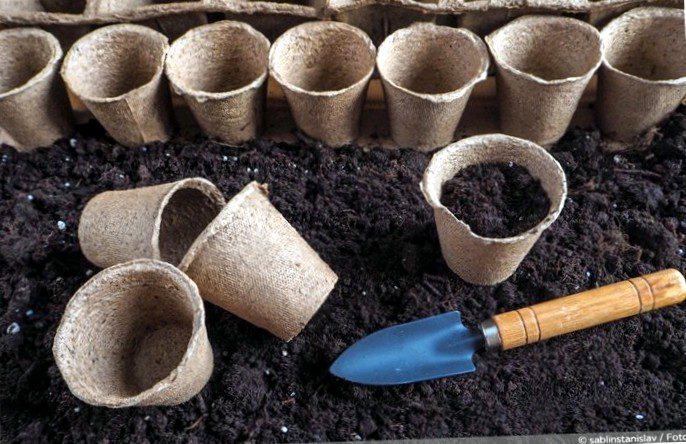
- Spread seeds on a tray filled with growing medium about three centimeters apart
- Cover seeds with a thin layer of soil (dark seedlings) and moisten soil well
- stretch translucent foil over the pot
- Location: sunny windowsill
- Uncover the foil daily, moisten the soil and close it again (avoid waterlogging)
- Germination temperature: 20 to 24 degrees Celsius
- Pricking out: after about six to ten days, when the first leaves appear
Pot
In order for tomatoes in a pot to find optimal conditions for growth and tomato ripening, the following criteria should be adhered to:
- After pricking out, transplant into a pot with a capacity of between three and 20 liters (depending on the variety)
- Use only pots with a drainage hole, so that excess water can run off
- Lay out drainage of quartz sand or fine gravel on the bottom of the pot (layer about two centimeters thick)
- Use nutrient-rich substrate
- Maintain a distance between the edge of the pot and the surface of the substrate of about two centimeters (prevents overflow after watering
Location
To thrive optimally in the apartment, the location for growing tomatoes on the windowsill must meet certain requirements, as described below:
- Light conditions: bright and sunny
- A window seat with a southern exposure is optimal
- If the natural brightness is not sufficiently secured, irradiate with a special plant light
- Ambient temperature: between 18 and 20 degrees Celsius
- Suitable places: unheated kitchen, hallway, cool bedroom
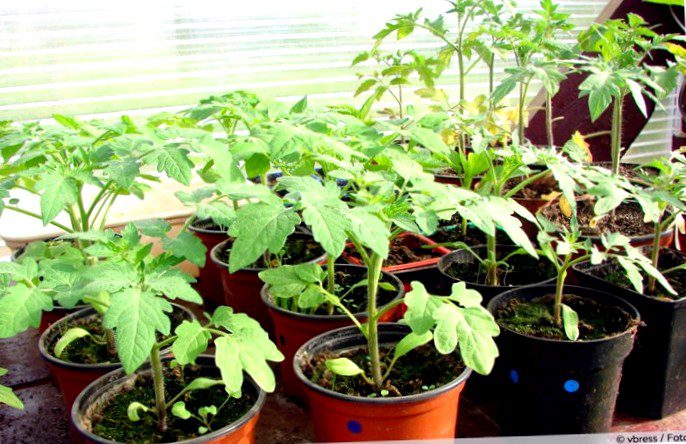
Plant lamp
If normal daylight is not sufficient, or if tomato cultivation in the home comes to a standstill because permanently gray clouds and rain provide little brightness, splendid, healthy thriving can only be ensured via a plant lamp. Especially in February to March/April this can be the case, when a lot of daylight and sun is needed for the sowing as well as the pulling forward. This time can be bridged only my a plant lamp. It should be noted that this should never burn for more than twelve to 14 hours at a time. The plants also need the darkness to get rest.
When buying a suitable lamp should pay attention to the requirements of tomatoes. A plant lamp should meet the following criteria:
- Kelvin number between 5.300 K and 6.500 K for growing
- At least ten watt LED
- Scattering angle: between 45 and 90 degrees, depending on the size of the plant/cultivation box
- LED lamps are optimal because they do not or hardly develop heat and thus do not overheat the plants
Care
When growing tomatoes indoors, the difference in care to outdoor tomatoes is not great. Only a few subtleties should be taken into account so that the tomato plant can thrive optimally on the windowsill.
Watering
The plant has a relatively high water requirement, the warmer it stands. It is important to check the moisture content of the tomato plant daily, as even short-term drying can cause damage. It is also recommended to use a saucer, which is placed under the pot. Excess water can be collected without water stains on the windowsill.
When watering, you should proceed as follows:
- Without exception, use lime-free and lukewarm irrigation water
- Water only the soil/substrate – do not wet the leaves
- Keep soil continuously moist without allowing waterlogging to develop
- Drying water leaked through the drain hole
- During the heating season and on hot summer days, water twice a day if necessary
Fertilize
Tomatoes need a lot of nutrients, especially for fruiting. They can not receive them from the ground without limitation, as most outdoor tomatoes. For this reason, regular fertilization is an essential criterion for optimal tomato cultivation indoors. A lack of nutrients can be recognized by light green leaves. At the latest then fertilizing is indispensable.
You should fertilize according to the following instructions:
- Fertilize with commercially available liquid fertilizer
- When fertilizing with granules or similar, moisten the substrate beforehand
- Fertilizing rhythm: every two to three weeks until first fruit set is visible
- From the first fruit set, reduce fertilization to once a week
- Alternatively, severed stingy shoots can act as fertilizer if they are scattered all around the substrate
Pruning/budding
In general, it is not necessary to prick out small tomato varieties. In the foreground of a Ausgeizens is primarily to promote the growth of larger fruits. This does not help noticeably with small tomatoes.
Still, sizing out can be beneficial for certain reasons:
- It prevents fungal diseases
- The plant can devote more energy to fruit formation and improve quality
- Keeps the plant compact
- Prevents too dense growth and possibly lack of space for vigorous tomato ripening in larger varieties
- The cut shoots work excellently as fertilizer
Instructions Pruning
When pruning, shoots and leaves are removed. This should be done as in these instructions:
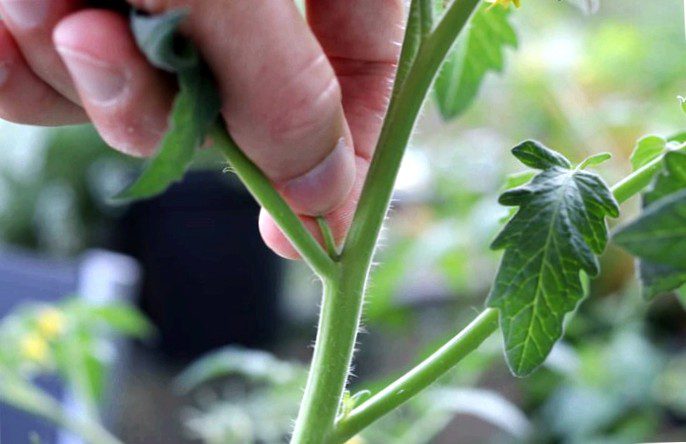
- Remove all young and older side shoots
- Pinch off fresh and young shoots with your fingers
- Never cut above the flower spike
- Cut off the lowest leaves
Pollination
Pollination is necessary for splendid and flavorful tomatoes to develop. This is done by nature with outdoor tomatoes. When growing tomatoes indoors, this is lacking. Here amateur gardeners and self-supporters can easily help themselves. For this purpose, there are various methods to choose from, which should be carried out several times in succession on different days, since the opening of all the flowers does not take place at the same time. In addition, at the time of "artificially" induced pollination, the environment should meet certain conditions so that pollination works properly.
This is how pollination works indoors:
- Gently shake the tomato plant
- Using the vibration of an electric toothbrush to move the flowers
- Go lightly over the pollen bags and stigmas with a soft brush
- Use a fan to provide airflow
Required environmental conditions are:
- Humidity between 50 and 70 percent
- If the humidity is too high, the pollen clumps together
- If the humidity is too dry, the pollen germination capacity decreases
- Ambient temperature maximum 30 degrees Celsius
Harvesting tomatoes indoors
As a rule, after sowing or preplanting, the first Solanum lycopersicum are ready to harvest after a few weeks. When harvesting, it is important not to damage the fruit cap.
The ripeness of the fruit can be recognized by the following characteristics:
- Strong red or yellow color (depending on the variety)
- The skin of the fruit can be easily depressed
- Tomatoes come off almost without resistance